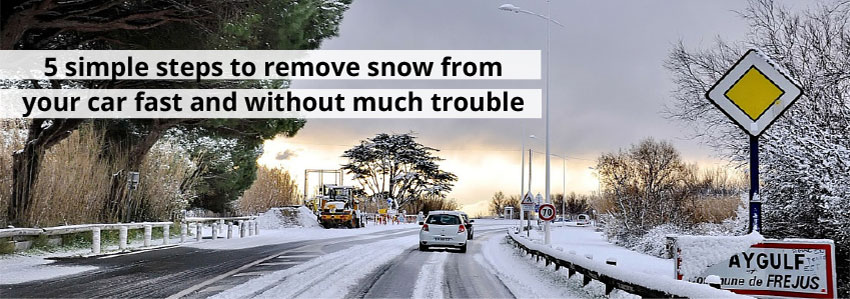5 simple steps to remove snow from your car fast and without much trouble
 5 simple steps to remove snow from your car fast and without much trouble
5 simple steps to remove snow from your car fast and without much trouble
The cold season brings one of the biggest headaches for drivers: snow. It can be a very unpleasant surprise to find your car covered in snow in the parking lot after a heavy snowfall. And if you are in a hurry, even more so.
Almost every driver has a technique (more or less effective) as to remove snow from the car, but regardless of your technique, you should never leave with your car partially cleaned from snow, for your own safety as well as for the other traffic participants’ safety.
To help you deal with more ease with the moments when your car is covered with snow, see below 5 simple steps recommended by the Star Lubricants team so you do not have to spend too long in the cold around your car covered with snow.
1. Clean the driver’s door
The first thing you need to do is try to clean the driver's door. Clean off the snow from the door, including its joints on the car body. If the driver's door is blocked because the lock is frozen, do not force it but try to enter through another door.
Also, it would be helpful to have on hand a spray or a solution for defrosting locks. These products can save you if you cannot open the car due to very low temperatures.
2. Start the car to warm up
Once you managed to open the car, start the engine and the demister to warm the inside of the car. For a faster heating of the inside, a good idea is to switch the air conditioning on "recycle" mode in order to use the air from car that gradually becomes warmer.
Normally, there should be no problems when starting the engine in cold weather if you use a lubricant from the Mobil 1 synthetic lubricant range. It will immediately begin to circulate inside the engine components to protect them, even at negative temperatures.
3. Clean the snow off the car
While the car is warming up, start cleaning the snow off the car. During this step, be careful regarding the tools you use. It would be best to use a special brush for snow and avoid plastic tools like dustpans or shovels because there is a risk to scratch the car’s body and windows. Also, avoid using a straw broom because most of them contain wire, which can also scratch the car body.
Even if you are in a hurry, do not forget to take the snow off the roof of the car because otherwise it may end up on the windscreen while driving.
Some drivers choose to clean even the ice from the car’s body with an ice scraper or other tools, but this operation is not recommended because it produces fine scratches that affect the paint. It is best to leave the ice in its place, because it will gradually fall on its own because of the heat inside the car.
4. Defrost the windscreen
For the cars equipped with heated windscreen, this step is much easier. But if you are not that lucky, most likely because of the car’s heating, the windows will began to defrost as well. Nonetheless, to speed the process, you can use special solutions (spray for defrosting the windscreen, winter windscreen liquids).
The main rule that you should follow is to not force the windscreen wipers until the windscreen is completely defrosted.
Also, never start driving with the windscreen frozen hoping that it will defrost along the way because the already reduced visibility during winter will be accentuated by a windscreen that is only half defrosted.
5. Clean the snow off the taillights and headlights
Many drivers forget this essential aspect during winter, when visibility is lower. Before leaving, do not neglect cleaning the snow and ice from the headlights and taillights to make sure you are seen by other traffic participants. To clean them more easily, you can switch on the lights to warm up.
Finally, do not forget to clean the license plates as well to avoid risking getting a fine.
Once you have followed the 5 steps above, your car should be ready to go. To make sure you arrive safely to your destination, see here some useful tips that will help you drive safely during winter.







